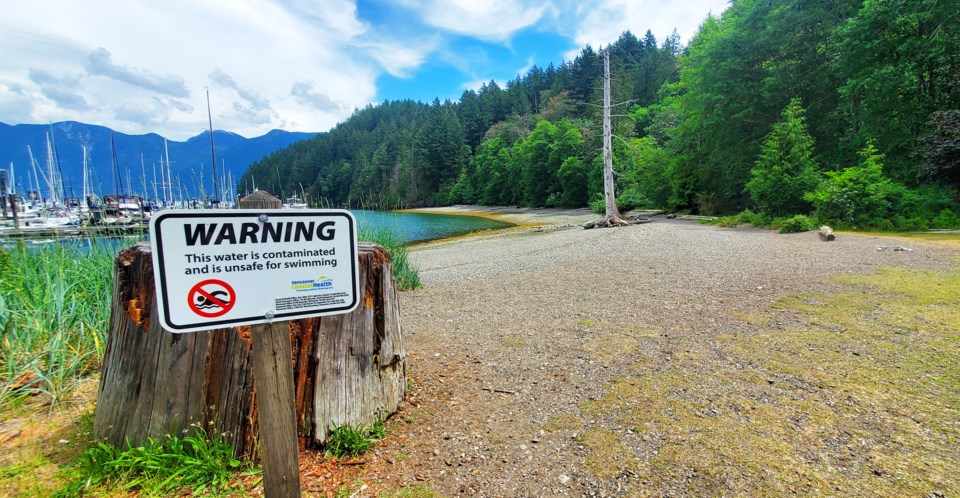Bowen’s beach closures have been cut in half, with just Snug Cove Beach remaining off limits due to E. coli levels in the water.
Sandy Beach was also closed for swimming this summer following high E. coli levels of its own, but received the all-clear last week after several weeks of low readings. Vancouver Coastal Health conducts a pair of readings at Metro Vancouver and Fraser Valley beaches each week.
Levels above 200 E. coli per 100 mL of water are considered unsafe for human ingestion, and can cause “gastrointestinal illnesses and skin/eye infections,” according to VCH.
On Bowen, VCH also tests at Pebbly Beach, Mothers Beach, Bowen Bay, and Tunstall Bay. All four have remained open all summer.
As for the source of the bacteria, while nothing has been confirmed there are plenty of possibilities for how the E. coli spread. Municipal manager of environment and parks planning Bonny Brokenshire spoke to some of the confirmed and potential origins.
“During the high counts in Mannion Bay (Sandy Beach) there were a lot of geese seen in the area. Geese, of course, can contribute to higher counts,” says Brokenshire. Goose feces can contain E. coli.
She adds geese find both Sandy Beach and Snug Cove Beach, particularly the area around the Marina, quite popular.
Many possible environmental and human factors
Brokenshire says other sources have received speculation, though notes none have been confirmed as an E. coli source. These include outflow at Dorman Point which could be brought into Mannion Bay by currents, or aging or failing septic fields along Terminal Creek and the nearby lagoon.
Lagoon readings over the past five years haven’t revealed high E. coli levels though. Brokenshire adds that VCH occasionally tests septic fields in the area too, and haven’t found an E. coli leak. “There are no known contributing houses, septic fields or failing septic fields that we know of,” she says.
Another factor, certainly for Sandy Beach, could be E. coli released from sediment along the beaches. Studies have shown the bacteria can live in sediment until a disturbance event.
“E. coli can live in sediments for some time, and then when conditions become right the bacteria may flourish. A lot of the sediment that comes down Terminal Creek, with the lay of the land and the estuary… does end up adjacent to or around Sandy Beach,” says Brokenshire.
“So there is a possibility that with rougher weather or increased temperatures or maybe alkalinity or pH changes… that the bacteria could start to divide and you might get some lingering from sediment.”
There is also some belief that shellfish can act as a filter of sorts for E. coli. Billions of shellfish were killed in B.C. – including in Howe Sound – during last summer’s heat dome. This could potentially lead to more bacteria being able to flourish in the region’s waters.
Higher E. coli levels at Snug Cove naturally raise the question of whether boats docked at the Marina could be contributing. Brokenshire hopes this isn’t the case, and that most boaters are responsible and make use of the pump-out station.
But she acknowledges there is evidence showing a correlation between live-aboard boats and higher E. coli water levels, and that it can be hard to keep an eye on the many transient boats which make use of the Marina.
Extreme temperatures can also affect pH levels in the water, and cause bacteria to divide more readily. As summer draws to a close and fall temperatures move in, E. coli levels should soon recede.
“We hope that it’s clear sailing for the rest of August and September,” says Brokenshire.



